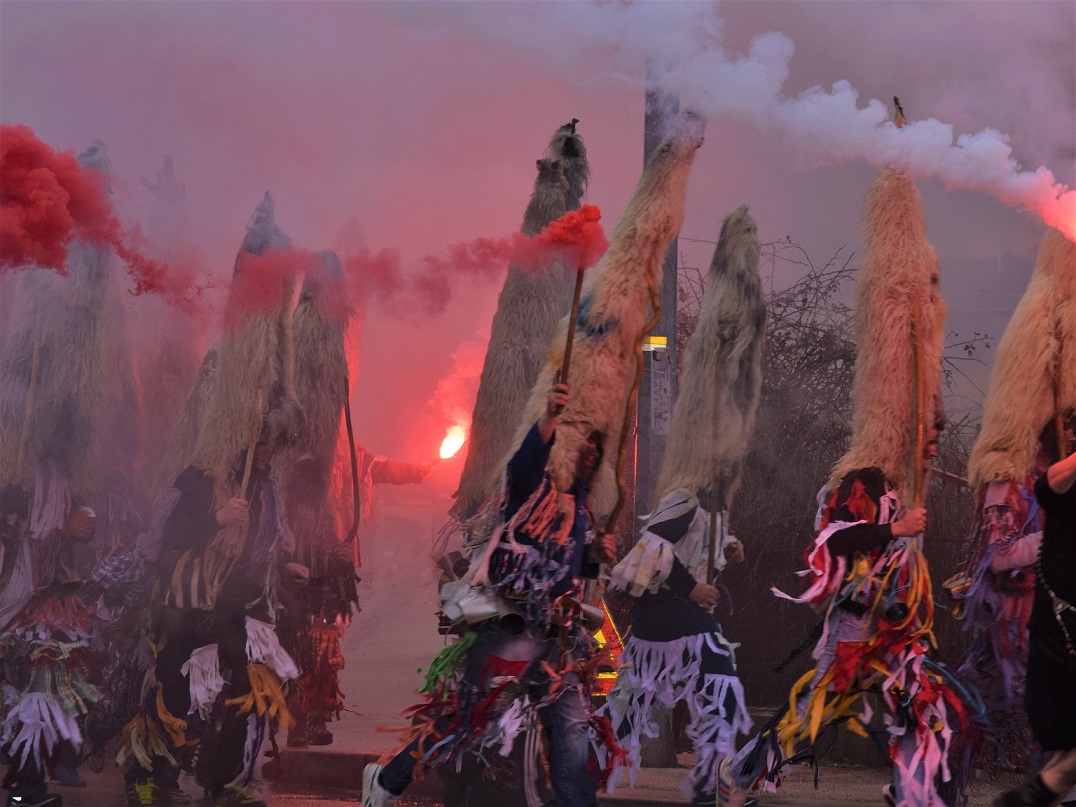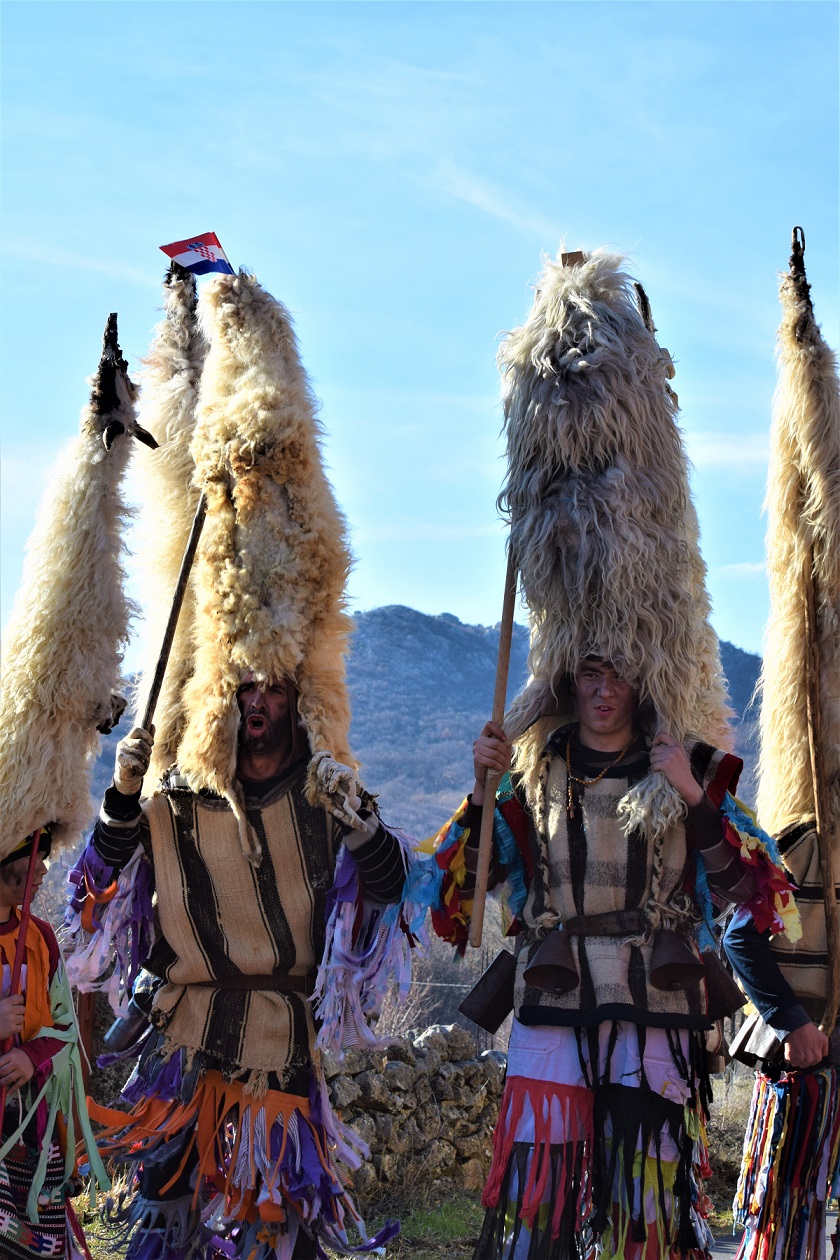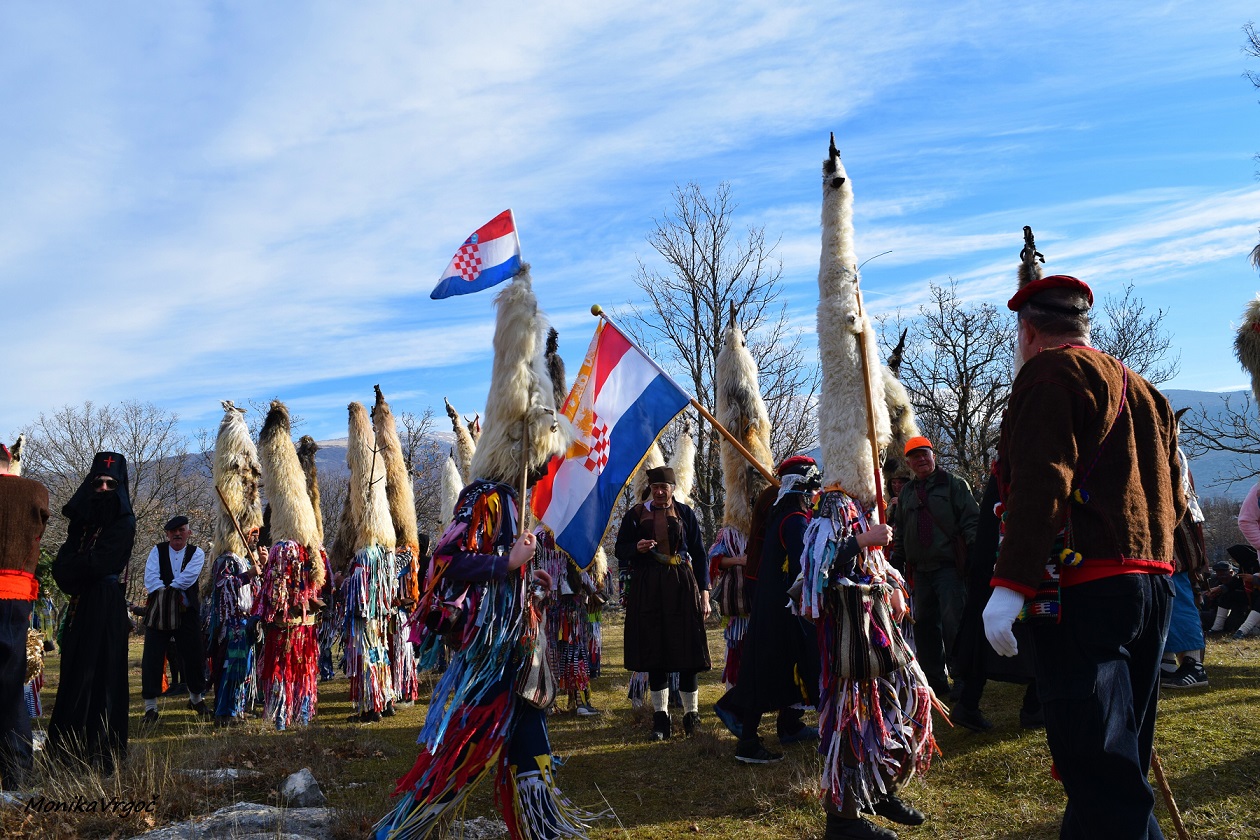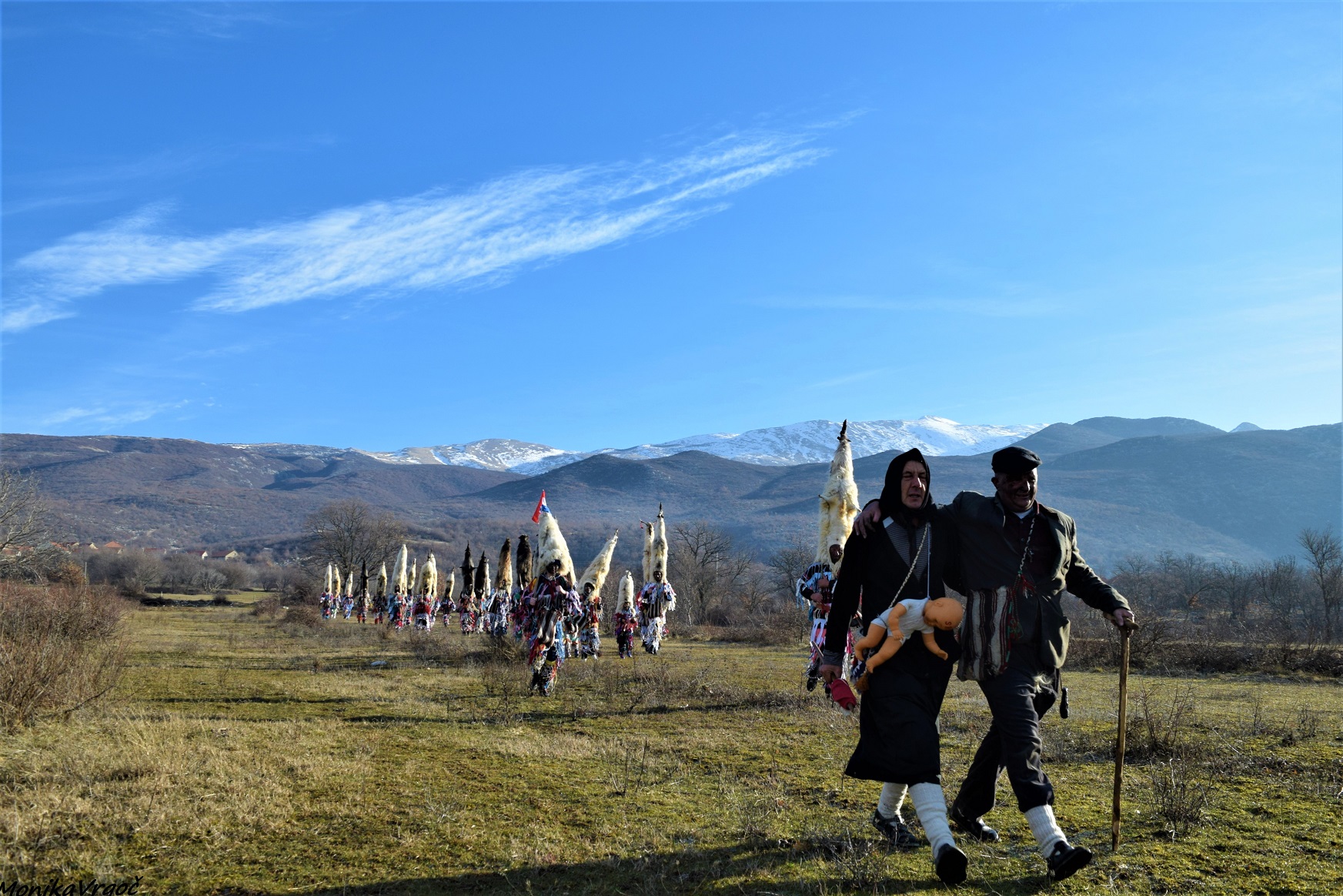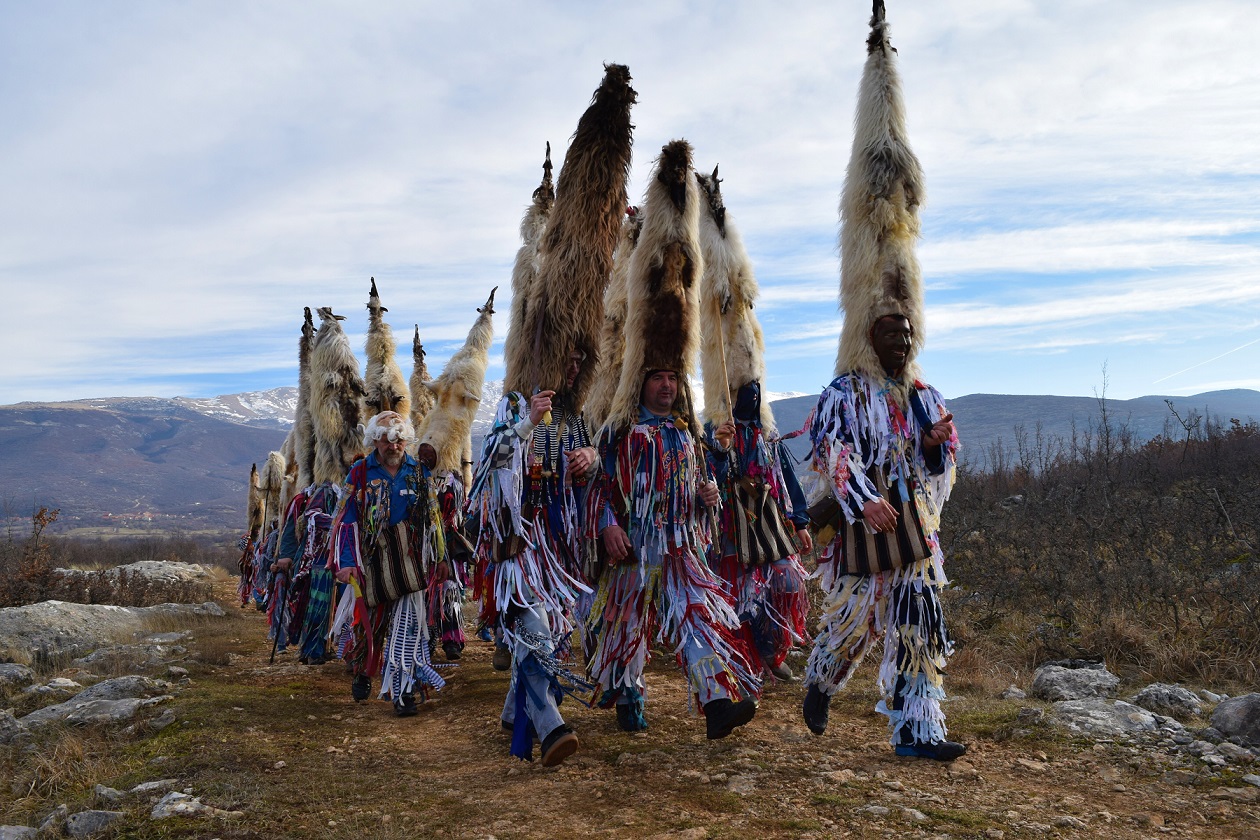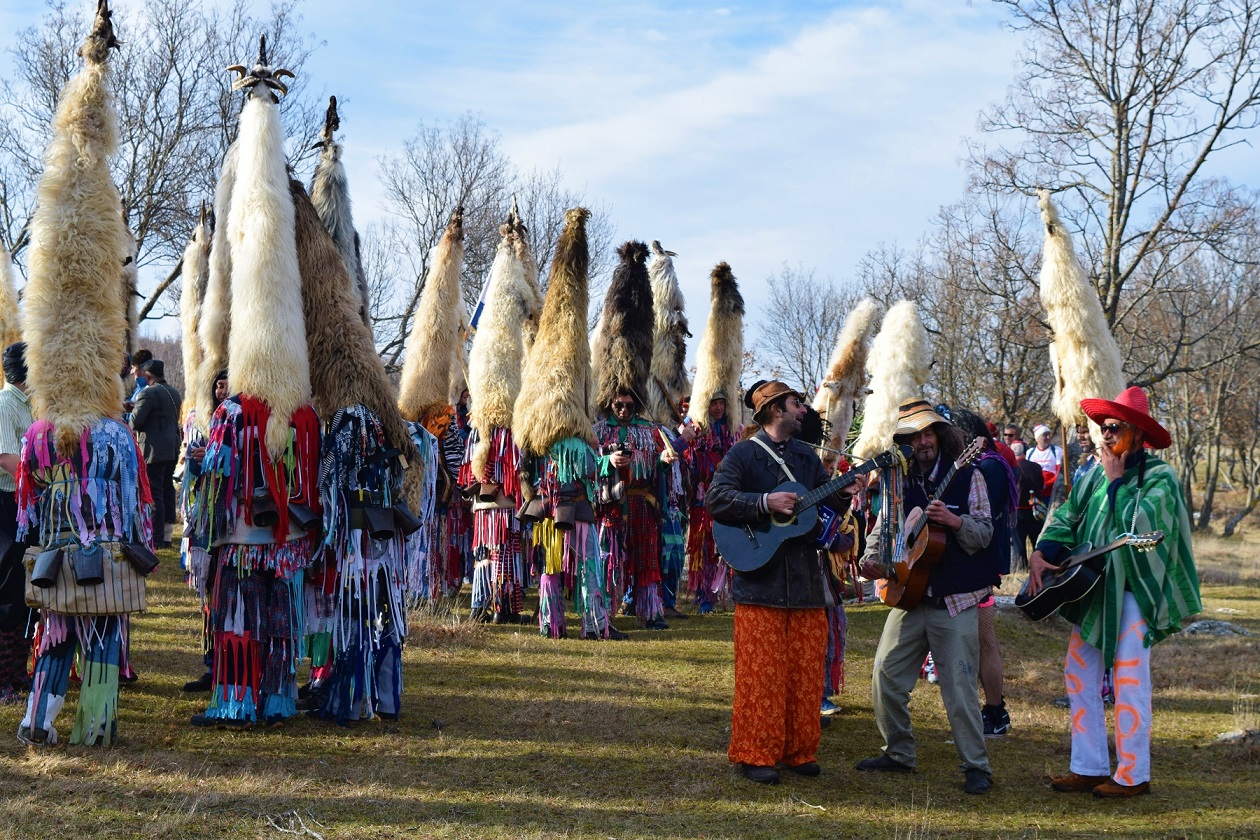Virtual Walk along Our Lady of Sinj Trail (PHOTOS)
May 26, 2021 - The tourist boards of Sinj, Solin, and the municipalities of Klis and Dugopolje, in cooperation with Split-Dalmatia County, the Shrine of Our Lady of Sinj, and the tourist agency Cogitolab, are beginning the first phase of a virtual Our Lady of Sinj Trail and a new website www.stazagospisinjskoj.hr.
After last year's announcement that the Our Lady of Sinj project would be revitalized, initiated by Split-Dalmatia County in cooperation with the Shrine of Our Miraculous Lady of Sinj in Sinj, HGSS Split branch, Split-Dalmatia County Tourist Board, Sinj and Solin, Dicmo, Dugopolje and Klis municipalities, the Tourist Boards of Sinj and Solin and the municipalities of Dugopolje and Klis, the project of renovation and upgrade of the Our Lady of Sinj Trail is currently being implemented through the creation of a Virtual Walk and the creation of a new website.
Željko Zrnčić
The Our Lady of Sinj Trail stretches on the Solin - Sinj - Livno - Tomislavgrad - Rama route and is 148 kilometers long. It is a pilgrimage route that has been used for centuries to walk from several directions to the largest Marian shrine in southern Croatia. The Our Lady of Sinj Trail project has been approved under the IPA Croatia - Bosnia and Herzegovina program and relies on traditional hiking and equestrian trails and the abandoned Rera route, the former Sinj railway.
Monika Vrgoč
After the official completion of the project in 2015, there were numerous devastations on the track itself. Therefore, to further evaluate, Split-Dalmatia County initiated its reconstruction.
Faced with a global pandemic, due to which we all have limited movements and new market conditions and modalities, we have embarked on the first phase of revitalizing the Our Lady of Sinj Trail project.
Using virtual tools, the project tries to bring all interested visitors closer to the entire offer on the trail (numerous sights, rich cultural and historical heritage, as well as tourist facilities) and interest them in future visits to the Our Lady of Sinj Trail and Marian shrines. The virtual walk is prepared by members of the experienced team of the Cogitolab agency in cooperation with the priests of Our Lady of Sinj priests, the Shrine of Our Lady of Otok, the Parish of St. Jakov and Ana in Dicmo, Parish of St. Michael the Archangel in Dugopolje and the Parish of the Assumption of the Blessed Virgin Mary in Klis, which will provide them with the necessary conditions and help in creating content for many pilgrims who arrive in our southern Croatian Marian shrines.

Ivan Alebić
Marian shrines have always had a special place in the hearts of believers. They worshiped the Blessed Virgin Mary and prayed to her for help in difficult times and troubles. They trusted in her heavenly intercession, honoring her out of gratitude as the queen of the Croats. She has been called the fidelissima advocata Croatiae (the most faithful lawyer of Croats) throughout history.
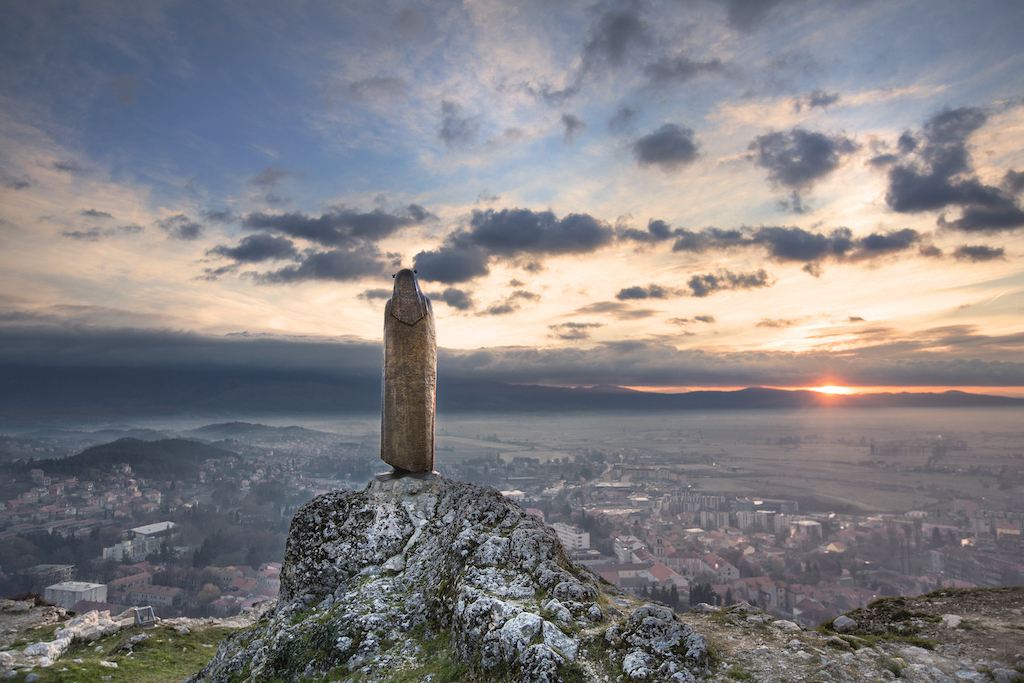
Ante Gaspar
Every year, before the Feast of the Assumption, between August 8 and 15, thousands of pilgrims, especially young people, go on a pilgrimage to the city of Sinj. On August 15, a central religious ceremony is held. Accompanied by the celebration of bells and fanfare, the image of the Miraculous Lady of Sinj is taken from the church in a solemn procession through the streets of the city. It is a great honor to carry the picture on your shoulders.
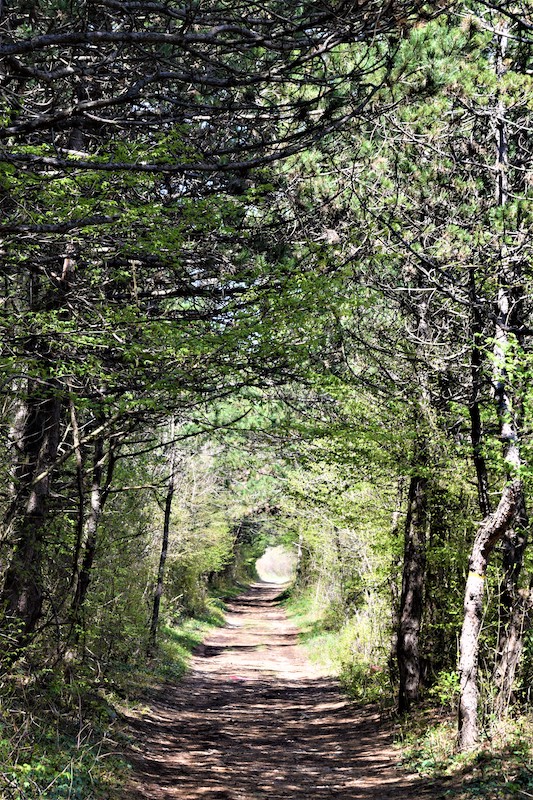
Kukuzovac
The historical connection between the faithful and Our Lady's shrines is also important on the eve of September 8, the feast of the Assumption, the celebration of the birth of the Blessed Virgin Mary, which is especially solemnly celebrated in Solin, in the Shrine of Our Lady of Otok. Rivers of pilgrims will flow from Sinj to Solin and from many other places in Croatia. It is a special experience to set off on foot along the ancient paved paths on a spiritual journey, away from the city noise and commotion, and to find peace and refuge in the safe shelter of Our Lady. Pilgrims will take the votive step to the Immaculate Virgin Mary, Mother of our Lord Jesus Christ, along marked paths through picturesque areas rich in historical heritage. On the spiritual journey to the Heavenly Mother, they will pass by the remains of old paths and bridges, along with the forts, forts, stećak tombstones, sacral buildings, and museums.

Branko Čović
By developing the accompanying infrastructure and raising awareness of the immense value of cultural and religious heritage, the Our Lady of Sinj Trail is active throughout the year, not only during the feasts of the Assumption.
The Our Lady of Sinj Trail is an excellent example of the functional coexistence of tourism and religion without disturbing the natural balance.
It is also a valuable contribution to the tourist offer of Sinj, Cetina region, and Split-Dalmatia County, proof of smart disposal of cultural and aesthetic values and natural resources, which certainly gives a positive boost to sustainable tourism, welfare, and well-being of society as a whole.
To learn more about Inland Dalmatia, follow TCN's dedicated page.
Ancient Iron Mine in Dugopolje Discovered (VIDEO)
May 3, 2021 - An ancient iron mine in Dugopolje has been discovered near the settlement of Kotlenice!
At the foot of the Mali Mosor hill near the settlement of Kotlenice (Dugopolje municipality), there is an underground mine in which iron was mined during the Austro-Hungarian Empire. It was likely mined for the needs of the Roman legion in Trilj's Tirulija, reports Dalmacija Danas.
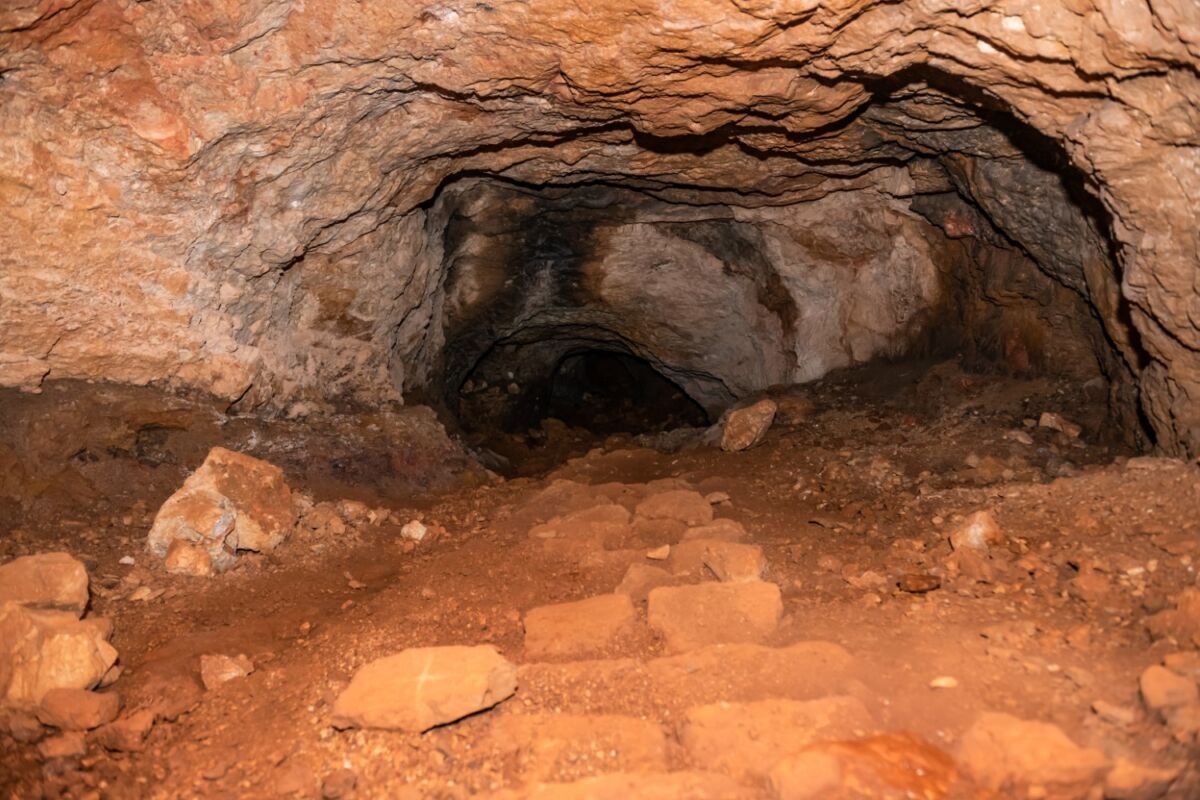
Saša Sapa Stojanović
However, as the Romans forcibly occupied these areas, it is assumed that they took it from the Illyrians.
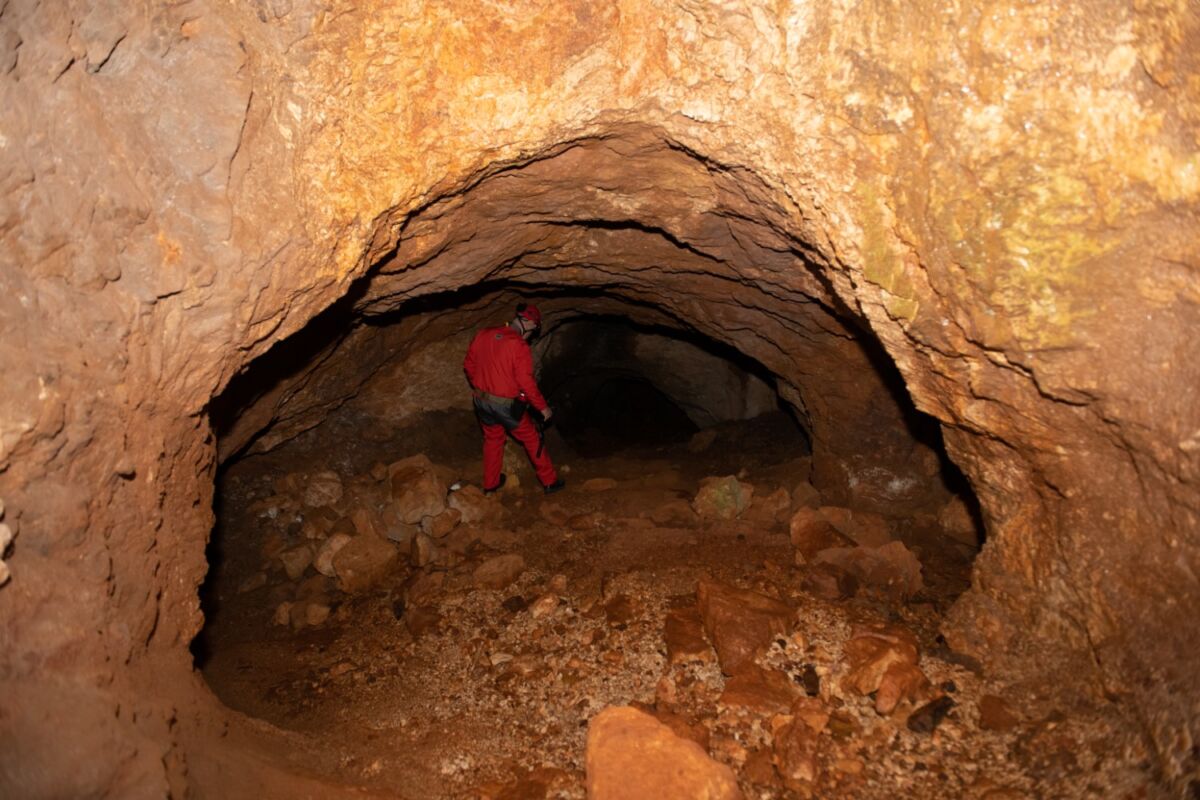
Saša Sapa Stojanović
The history of this mine is increased by three entrances and dozens of trenches. The lowest point of the mine is about 35 meters below ground level and branches almost a kilometer in all its directions.
"We urge you not to enter the mine without equipment or expert guidance due to the danger of getting lost or injured by the collapse of fragile material," says the author of the video "Ancient mine - secrets of the underground labyrinth in Kotelnice," Jurica Galić Juka.
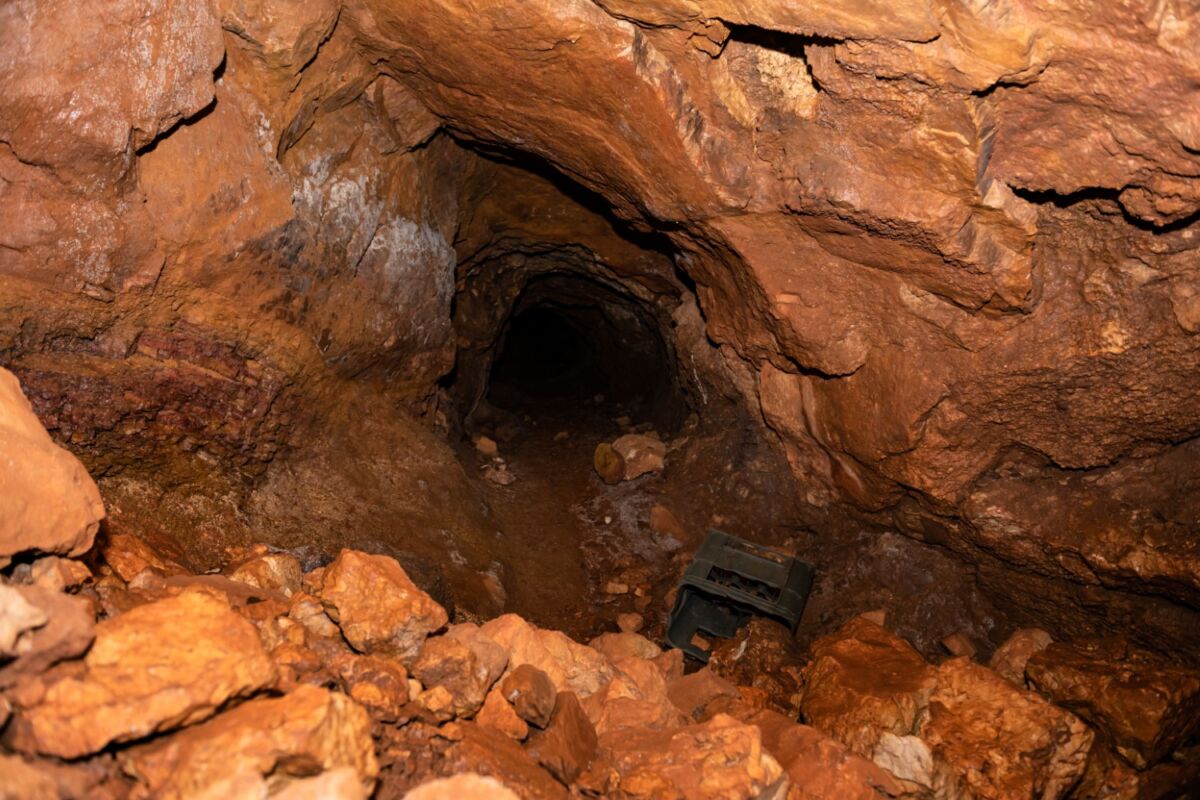
Saša Sapa Stojanović
At the end of this instructive and interesting video, speleologists gave a great example of how to protect the heritage of their homeland. Namely, the truck tire thrown into the mine was taken to the surface and then deposited in a container.
For more about lifestyle in Croatia, follow TCN's dedicated page.
Cycling Tourism Development in Inland Dalmatia - Split Hinterland Presented in Dugopolje
April 12, 2021 - The tourist boards of the Municipality of Dugopolje, the Municipality of Klis, Sinj, Trilj, and Vrlika have joined forces to launch a project for the developing a modern cycling tourism offer in their area. The Cycling tourism development in Inland Dalmatia - Split Hinterland project was presented in Dugopolje.
As a selective form of high value-added tourism, cycling tourism is one of the fastest-growing niches in the tourism industry. Simultaneously, cycling tourism is an extremely sustainable and valuable catalyst for the tourist and economic and social development of areas and regions that traditionally are not considered active in tourism. At the heart of its users' motivation lies the desire to enjoy the preserved spaces and get to know the authentic local cultures.
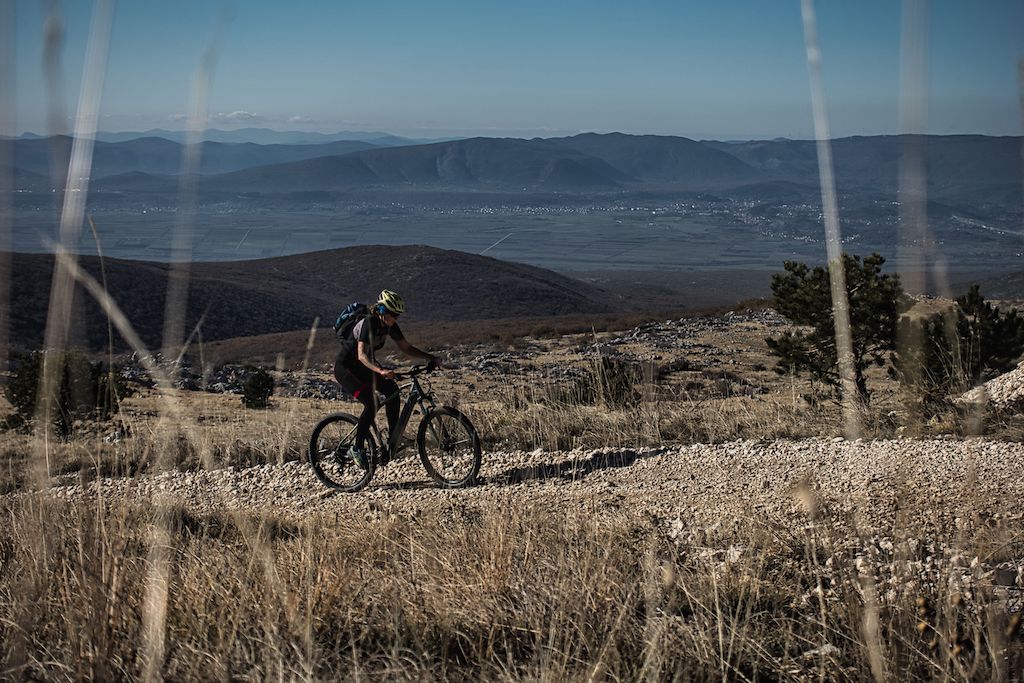
Bruno Radotić and Petar Čavlović
For tourist-developed destinations, cycling tourism provides much-needed diversification of the offer, the extension of the season, and guests with higher added value. To them, complementary to rural areas, it opens the door to tourist activity. The potential of cycling tourism is also recognized at the strategic level, so in the Tourism Development Strategy of the Republic of Croatia, it is stated as a strategically important product in which it is necessary to invest. Also, in the conditions of the "new normal," cycling tourism acquires an additional positive dimension as one of the most resilient forms of tourism in the context of the COVID-19 pandemic.
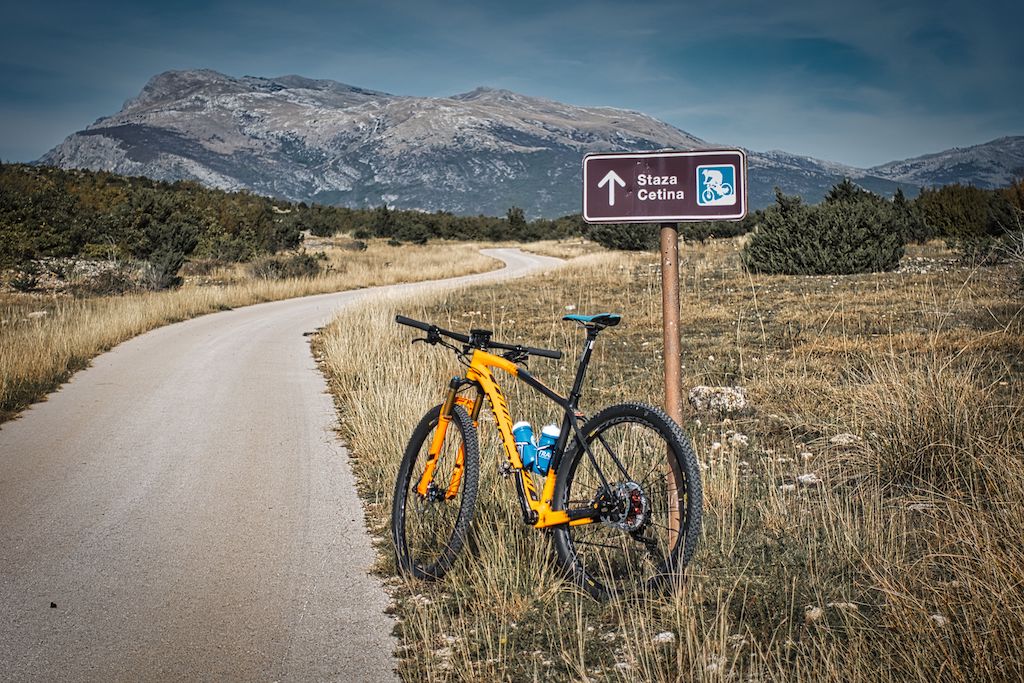
Bruno Radotić and Petar Čavlović
Cycling requires a systematic approach to developing infrastructure and services and creating fresh promotional patterns. Collaborating with the brand "Trail - Full Cycling Experience," specializing in the development of cycling destinations, which in Dalmatia develops a cycling offer of Makarska Riviera and Zabiokovolje and the Neretva Valley, and created a unique micro-destination Polje Jezero between Vrgorac and Ploce, began in late 2020 is an extensive field and analytical work of assessing resources, potential, and the current situation in the area of Dugopolje, Klis, Sinj, Trilj, and Vrlika.
During November and December 2020, cycling tourism experts drove all existing and marked routes in the area of all cities and municipalities involved in the project. In total, they analyzed 21 routes with 656 kilometers of bike routes. They assessed the types of routes, their adaptation to market needs, safety status, coherence of marking, complementarity, connectivity, and equipment and tourist attractiveness.
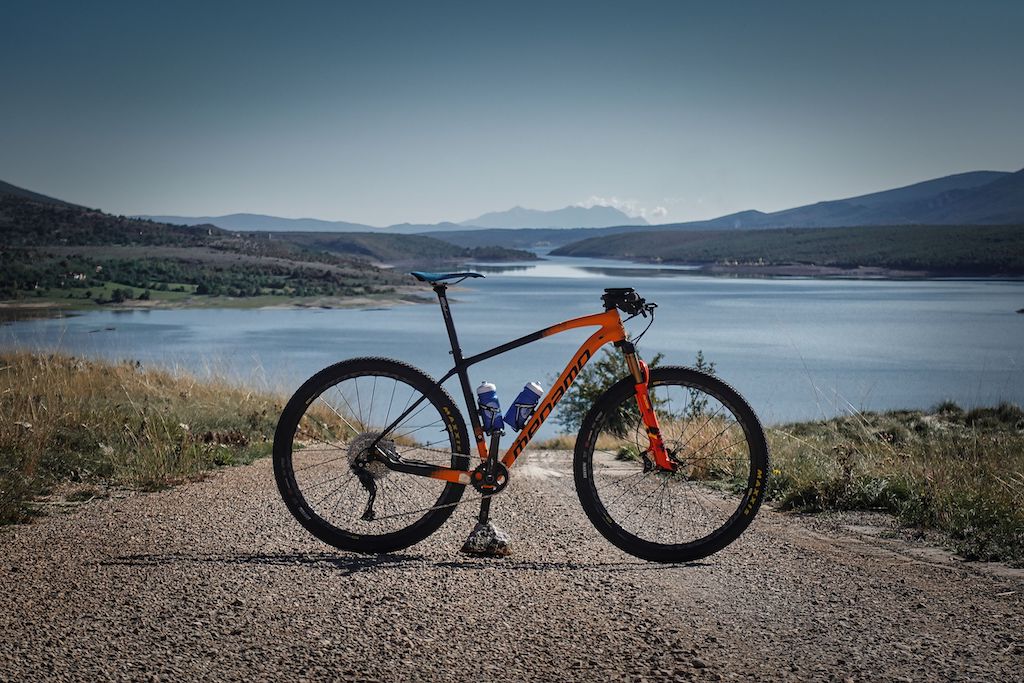
Bruno Radotić and Petar Čavlović
Based on the collected data, a detailed analytical-reporting document was prepared, which was presented to the client's representatives at the meeting held in March in Dugopolje.
The document provides a picture of the current situation, assesses the quality of existing infrastructure, highlights the challenges and obstacles to positioning the area in the cycling market, and provides basic guidelines for the necessary interventions and modifications of existing resources. It recognizes the exceptional potential of Inland Dalmatia as a cycling tourist destination. Preserved nature, diverse landscape, an extensive network of roads and local roads with low traffic intensity, and accessibility from the most important European markets make this branch of sports and adventure tourism a logical step.
Accordingly, the tourist boards of Vrlika, Trilj, and Sinj and the municipalities of Klis and Dugopolje continue to focus on the development of cycling tourism with the aim of greater recognition of the destination in key markets and developing sustainable tourism.
Follow the latest travel updates and COVID-19 news from Croatia HERE.
For more on travel in Croatia, follow TCN's dedicated page.
Didi s Kamesnice and More Carnival Customs from the Dalmatian Hinterland
February 13, 2021 – Sinj and the Cetina region have long attracted attention with unique and exciting events. One of them is certainly their well-known masquerade festival with 'Didi s Kamesnice', masquerade group from the village of Gljev in the Dalmatian hinterland.
Cetina Region's Masquerade Festival should have been held for the seventh time this year, as well as the centuries-old gatherings of masquerade groups in the Podkamešnica villages, which were supposed to precede the festival and the usual final carnival events. However, due to the ongoing coronavirus pandemic, it was all postponed for the next year.
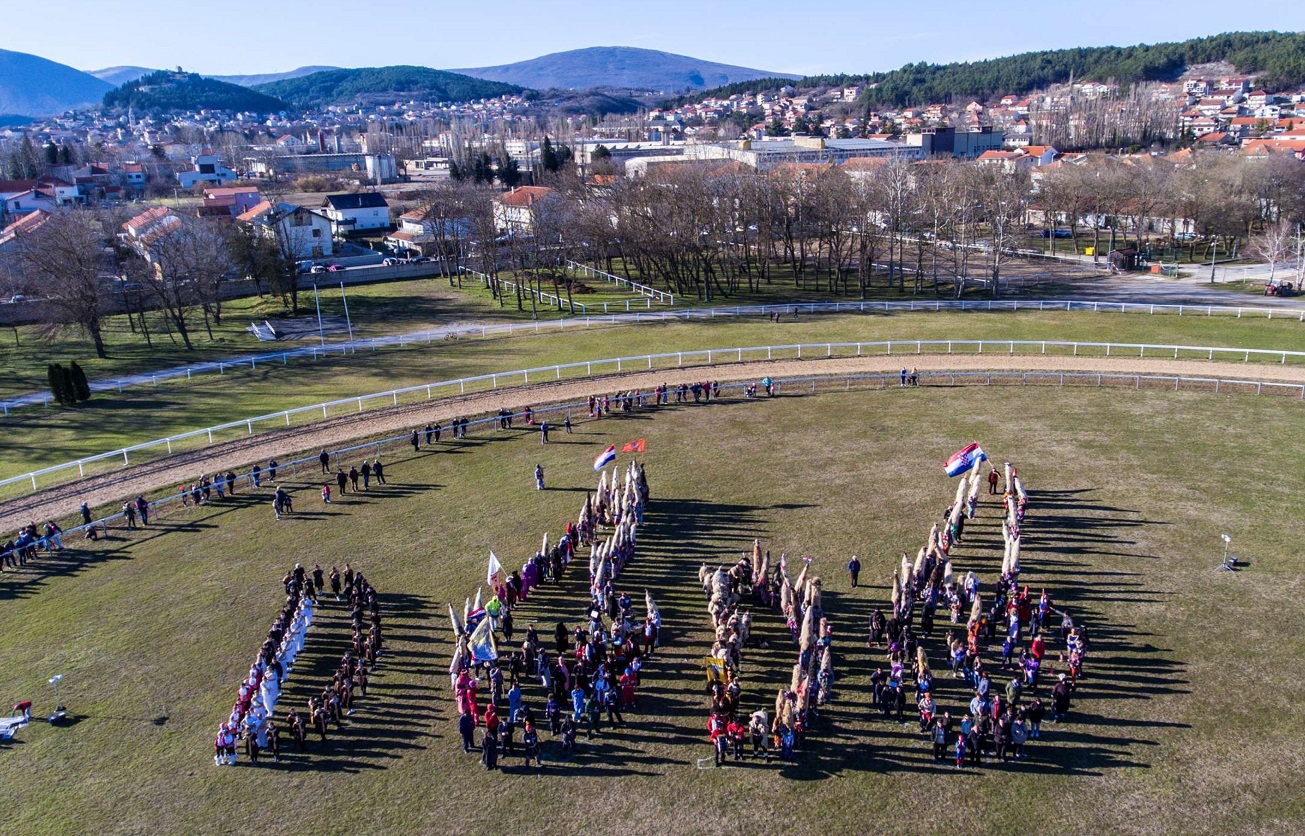
Millennial photo of the Sinj region masquerades - DIDI / Šime Strikoman
At the Festival, numerous masquerade groups present themselves to the general public in one place. The result is a lively, cheerful, colorful, and noisy procession that maintains a long tradition, according to carefully and strictly established rules.
Croatian protected intangible heritage
Masquerades are the best bearers and guardians of carnival customs in the Cetina region. After the Holy Three Kings' feast on January 6, they set out on visits to villages and hamlets. They are even included on the list of protected intangible cultural goods of the Republic of Croatia, which testifies how precious they are.
Podkamešnička villages are villages at the foot of Kamešnica mountain located on Croatia's border with Bosnia and Herzegovina, near Sinj in the Dalmatian hinterland.
In the villages of Gljev, Han, Obrovac Sinjski, Bajagić, and Gala, masquerade processions are a unique and original way of depicting ancient customs interwoven with the sound of masquerade bells and other accompanying rituals.
Masquerade procession in Obrovac Sinjski / Monika Vrgoč
In the municipality of Otok, each hamlet has its own masquerade group (Jelašce, Priblaće, Živinice, Gala, Ruda, Udovičići, and occasionally there are groups Glavičica-Priblaće, Strana with masquerades from Ovrlje and Korita). In the town of Trilj, masquerade processions take place in the villages of Grab, Jabuka, Košute, Vedrine, Vrpolje, Čačvina, and Velić.
Masquerade procession in Otok / Monika Vrgoč
Masquerade procession in Vrpolje / Monika Vrgoč
Driving away winter and bad spirits
The carnival procession's schedule is based on traditional rules, not subject to any changes, and only men participate in it. At the head is a group of white masquerades and wedding guests, then a group of comedies, and finally, with a certain distance, black masquerades.
The wedding party, which symbolizes the end of winter and spring arrival, was once led by the first grandfather (hrv. dida) and nowadays by the flag bearer (hrv. barjaktar).
Gljev / Monika Vrgoč
The masculine, pregnant bride, accompanied by a groomsman, is looking for the groom, which is the procession's main "task."
There are also married women, girls, and other wedding characters dressed in formal attire (folk costume).
Turk commands the masquerades, taking care not to mix white and black wedding guests, who must never be in the same place at the same time. The Turk and the aunt's characters are associated with the long presence of the Ottomans in this area.
Black wedding guests / Monika Vrgoč
Behind the wedding are comedies, a masquerade group that criticizes current social and political topics without sparing criticism.
Grandparents lead black weddings. They are bearers of the fertility cult who, by simulating sexual intercourse, invoke a better and more abundant annual harvest, another indispensable ritual element.
Grandparents in Gljev / Monika Vrgoč
There are also mourners in the procession, mourning widows who shout funny and comic slogans.
The most attractive and impressive part of the procession are the imposing "didi." They wear sheep's wool up to 1.5 m high on their heads and bells around their waists. They are dressed in old clothes sewn with colorful fringes.
They embody the age-old ritual struggle of good spirits with winter, which they drive away with noise and jumping. With the loud ringing of bells, they cast spells from cattle, which, along with fertility and spring arrival, testifies the most important preoccupations of our ancestors.
Monika Vrgoč
Monika Vrgoč
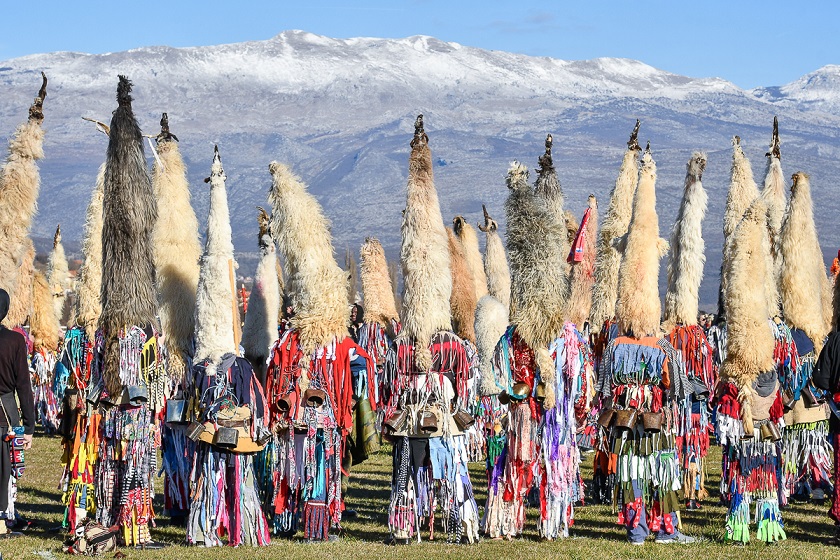
Ivana Pavičić
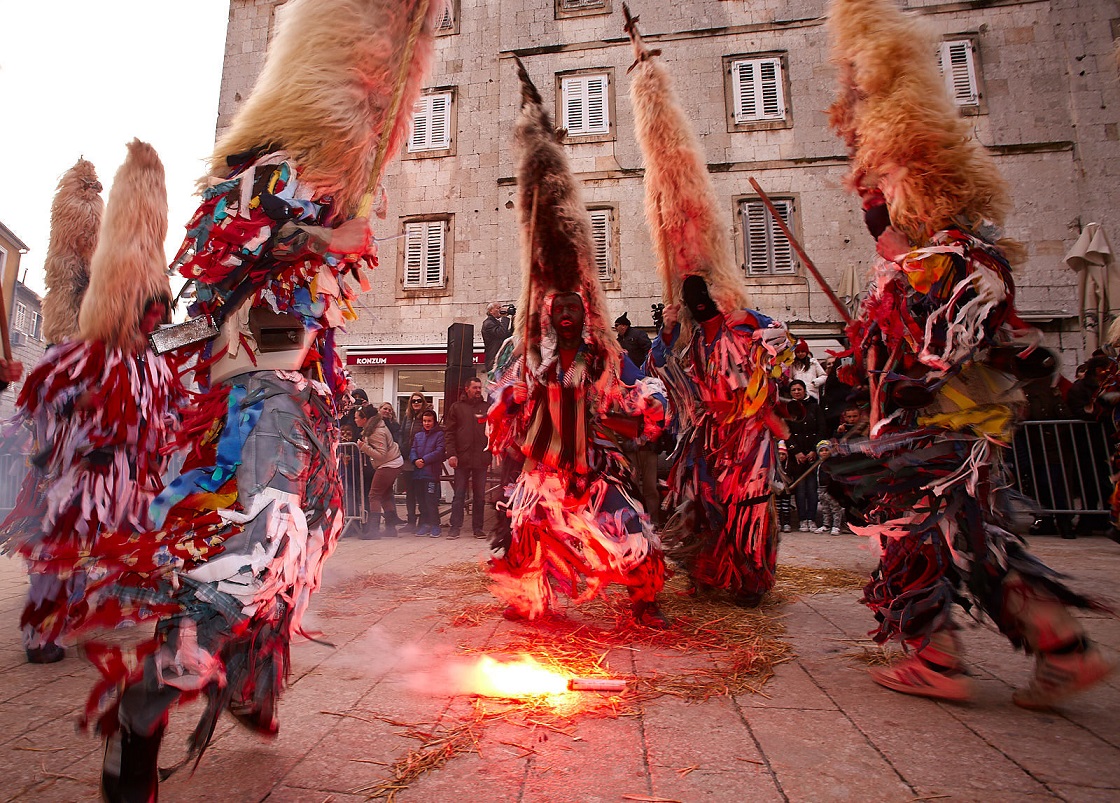
Nikola Belančić
Rich and inspiring carnival tradition
This long tradition of carnival customs, which preserves local identity, is nurtured and promoted by the association "Didi from Kamešnica" from the village of Gljev.
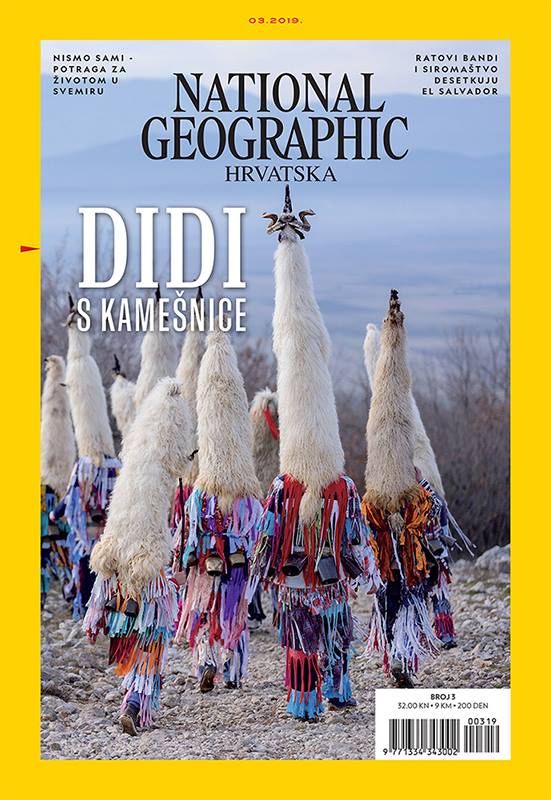
The Cetina region's carnival festival seeks to popularize the rich tradition of carnival customs, unique in Europe. Although carnival customs with similar themes exist in other parts of Croatia and Europe, they always embody the ritual struggle of good spirits with winter.
Therefore, "Didi" are welcome guests at festivals throughout Croatia and Europe and an inspiring motive for numerous scientific research, exhibitions, and lectures on the topic of intangible heritage. The famous magazine National Geographic brings the unique "Didi s Kamešnice" on one of its covers.
All photos © Sinj Tourist Board
For the latest travel info, bookmark our main travel info article, which is updated daily.
Read the Croatian Travel Update in your language - now available in 24 languages.
Sinj Tourist Board Presents New Brochure in Our Lady of Sinj's Honor
February 2, 2021 -The Sinj Tourist Board is proud to present a new brochure about the church and the Miraculous Lady of Sinj.
The new edition of the brochure, based on the previous two editions from 1998 and 2008, with the original text by Fr. Božo Vuleta, attracts attention with its unique design signed by esteemed and award-winning local designer Boris Ljubičić, a native of Sinj. The priests of the sanctuary and the designer himself took part in bringing this brochure to life. Selected photographs perfectly complement the text.

The themes of the new publication include the history of the Franciscans' arrival in this area, centuries of struggle for freedom, sketches of tireless construction, the literal - religious buildings that we know and admire today, and the spiritual - the creation of a community that is the heart of Sinj and Cetina region, but also much wider, like the Marian families; unwavering devotion to the Miraculous Lady of Sinj, artistic and spiritual uniqueness of the church and sanctuary, educational activities of the friars of Sinj, and the unbreakable connection of the Alka and Our Lady.
The brochure was printed in 3,000 copies, and by the end of March, in addition to the Croatian version, there should be translations in German and English.
PHOTOS: Environmental Cleanup of Illegal Landfills in Sinj Area
January 31, 2021 - The speleological section of the Sv. Jakov - Bitelić Mountaineering Society, members of HGSS, mountaineering associations, and adventure clubs, in cooperation with the City of Sinj, the Municipality of Hrvace, local and county utilities, and the support of the Sinj Tourist Board, successfully carried out an environmental cleanup of illegal landfills in Sinj (Zelovo) and the municipality of Hrvace.

At the initiative of the members of the speleological section of the Sv. Jakov - Bitelić Mountaineering Society, an ecological action of cleaning and fixing up 14 illegal landfills in the area of the municipality of Hrvace and the village of Zelovo in Sinj, was proposed. Namely, along the county road Hrvace-Zelovo ("old road"), along which several bicycle and pedestrian paths have been marked (through the Medpaths project), there are numerous illegal landfills where irresponsible individuals have disposed of large quantities of various waste for years. These are quantities that greatly endanger the existing infrastructure (Zelovski most), the natural environment, and aesthetically damage the area, which is increasingly used by many recreationists and tourists who stay in the area.
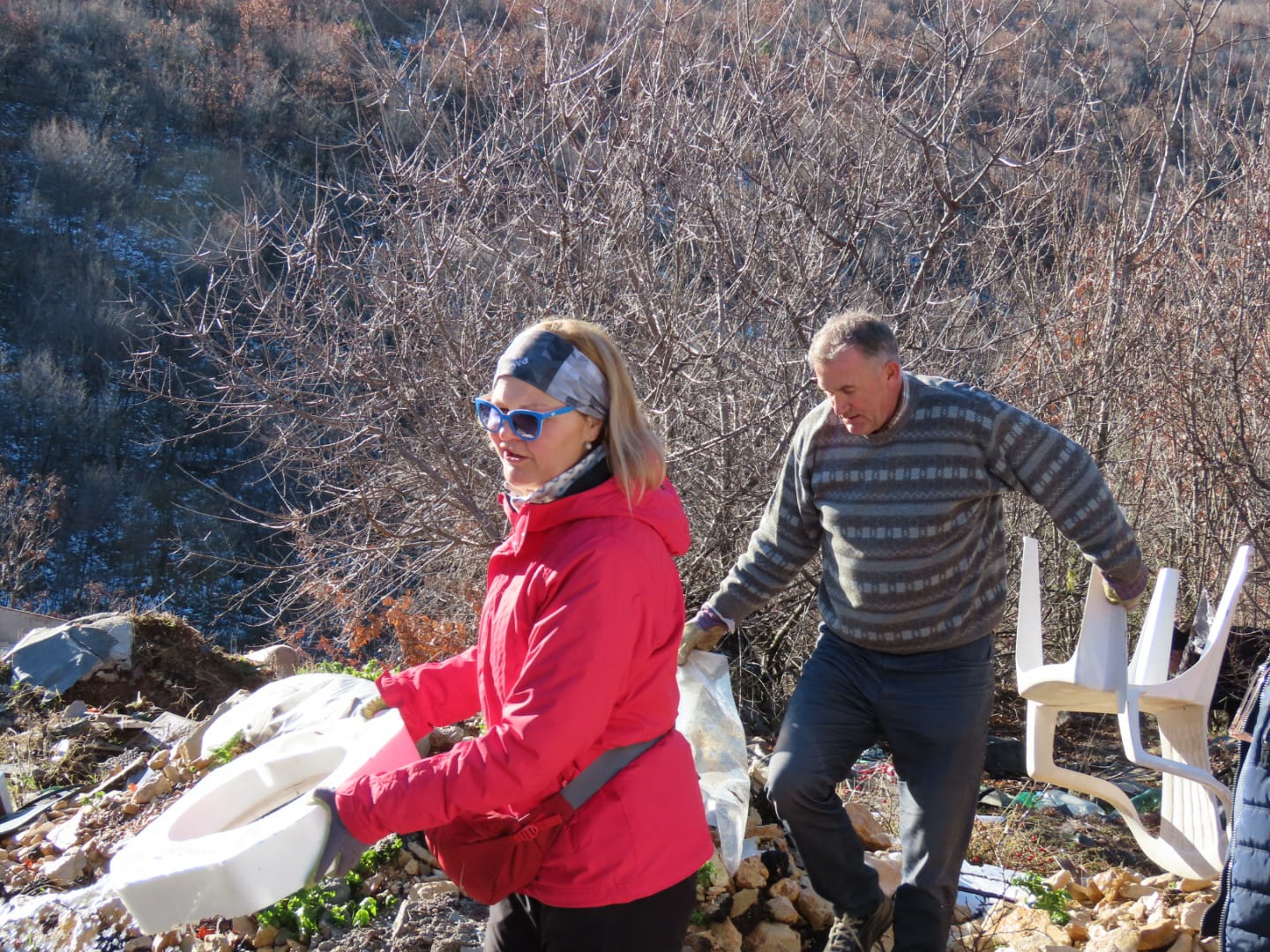

Respecting all valid epidemiological measures, this action was attended by numerous volunteers, nature lovers, members of local mountaineering associations: PD Sv. Jakov - Bitelić, PD Svilaja, NOPD Koćari, members of the Cycling Club Vlaji - Sinj and Cetina adventure - Club of Adventure Sports. The action was attended by members of HGSS station Split, members of DVD Sinj, Croatian Forests, and institutions without whose help this action would not be feasible: County Roads Split, County Road Administration, Cleanliness of Cetina region, and Water supply and drainage of Cetina region.



This action certainly wanted to contribute to environmental awareness and appeal to responsibility for the natural heritage.
The organizers would like to thank everyone who selflessly helped in this extremely demanding environmental action, with the announcement of a similar action soon.
All photos by Nikica Ugrin, Stanka Milošević, and Moniko Vrgoč.
Sinj Museum Night: Fully Virtual Program Announced
January 28, 2021 - This year's Sinj Museum Night event will be held on Friday, January 29!
The program at the Sinjska Alka Museum, which will be available from 6 to 11 pm, will be completely virtual. During its duration, two video games and a quiz will be promoted, a virtual walk around the Museum will be organized, as well as a quiz prize game, in which the winner will be chosen from those who answer most questions.
The information will be posted via Instagram and Facebook.
Museum Night Program 2021
The virtual game 'In the middle' is a simulation of the Alka competition. The player rides a horse and tries to hit "in the middle" and collect as many points as possible.
More info HERE
Battle of 1715 is a strategic game for several players, one of whom is on the side of the Ottomans, and the other on the side of Alkars. Through clever strategy, players try to incapacitate the enemy or conquer the Fortress.
More info HERE
Koliko punata? is an online quiz in which players can test their knowledge of the history and culture related to the Sinjska Alka with friends, acquaintances, and others on the Internet!
More info HERE
Virtual walk - On the www.alka.hr website, with a large number of photos and information about Sinjska Alka, the Alka Knights Society Sinj and the Sinjska Museum, you can take a virtual walk through the Museum.
More info HERE
To read moe about Inland Dalmatia, follow TCN's dedicated page.
An Advent Message from the Sinj Tourist Board
December 4, 2020 - An Advent message from the Sinj Tourist Board.
On Sunday we lit the first Advent candle, the symbolic meaning of Hope, eyes fixed on the stable of Bethlehem and open hearts for the second coming of the Savior. It is the wondrous symbolism of the circle of the Advent wreath, which has neither beginning nor end, and the candle, the little flame of the strong light of the world that breaks our darkness.
Hope is what we have never needed so much in these uncertain times where there is a global threat to health and life as we know it. The unwavering certainty of Christmas joy truly instills hope that humanity will overcome this obstacle as well, but also learn a lesson about true values.
Indeed, without the glitter of the decorated streets, without the delicious fare of Advent houses, without social networks overloaded with selfies - what’s left? The only thing left is love and togetherness that will overcome all challenges.
Perhaps this temporary alienation (yes, this too will pass!) reminds us of some, not so ancient times, and the traditional customs of this magical holiday period full of anticipation. Why not revive them and pass them on to younger generations, as they brought our ancestors so much sincere joy and fulfillment?

Monika Vrgoc
Since ancient times, the people have especially loved the celebrations of two dear saints, St. Nicholas and St. Lucia. According to legend, St. Nicholas provided a dowry to the daughters of a poor nobleman by secretly inserting bags of gold coins through the window. Today, good children are happy to wait for him, while the wicked are afraid of his companion, Krampus. Let’s not forget that once upon a time, children rejoiced in small sweets or rare fruits with the same zeal as today’s most expensive toy or the latest smart gadget.
St. Lucia, the patroness of sight, eyes, and female handicrafts, also gifted children. Some interesting customs are associated with her holiday. In addition to the traditional sowing of wheat to decorate the Christmas table and candles, symbols of prosperity and fertility, our ancestors used to write down the weather for 12 days until Christmas and thus monitor what the weather will be like in each month next year. There was also superstition - girls would write the names of young men on eleven pieces of paper and leave one blank. Every day until Christmas, they would pull out a piece of paper - if the last one was left blank - they would not get married!
Ditinjce, Materice, and Očići are beautiful old customs related to the three weeks before Christmas.
For Ditinjci, older people ask their children to give them fruit as a ransom, and on the second Sunday before Christmas, Materice is held. Then, the men ask for a gift from the women, and the mothers give sweets and fruit to the children, who recite in unison:
"Valjen Isus, gazdarice,
čestitan ti Materice.
Došao sam preko mora
da mi dadeš koji ora'.
Potrala me teška muka
da mi dadeš česam luka.
Natrala me teška zima
da mi dadeš čašu vina.
Natrala me ljuta muka
da mi dadeš i jabuka."
A week after Materice, Očići is celebrated, and children would say similar things to fathers as they did to mothers the week before. They would also go from house to house, congratulating all the other men among the relatives and neighbors, and greet them:
"Faljen Isus, očići, božićno je vrime,
mi smo došli sada tražit’ vaše otkupljenje.
Pođite na tavan, donesite mese,
ako nije suvo, otvorite kese.
Ako ništa nema, višanje se sprema!
Svim očevima neka su sritni Očići!"
In giving and spiritual communion, Christmas Eve would come, the day before Christmas itself. The word 'badnjak' (Christmas Eve) is a legacy of the Old Church Slavonic language, and both possible meanings are very beautiful and significant: either from the verb bdjeti or from razbadariti se - to wake up! Let's watch and wake up! On this day, the people traditionally fast, prepare food for a rich Christmas feast and decorate homes, barns, and gardens with herbs. It was most often adorned with ivy, olive, and laurel branches. The Christmas tree was once adorned with candles (symbols of hope and divinity), walnuts painted in silver or gold, hazelnuts, apples, figs, decorative paper, and more.
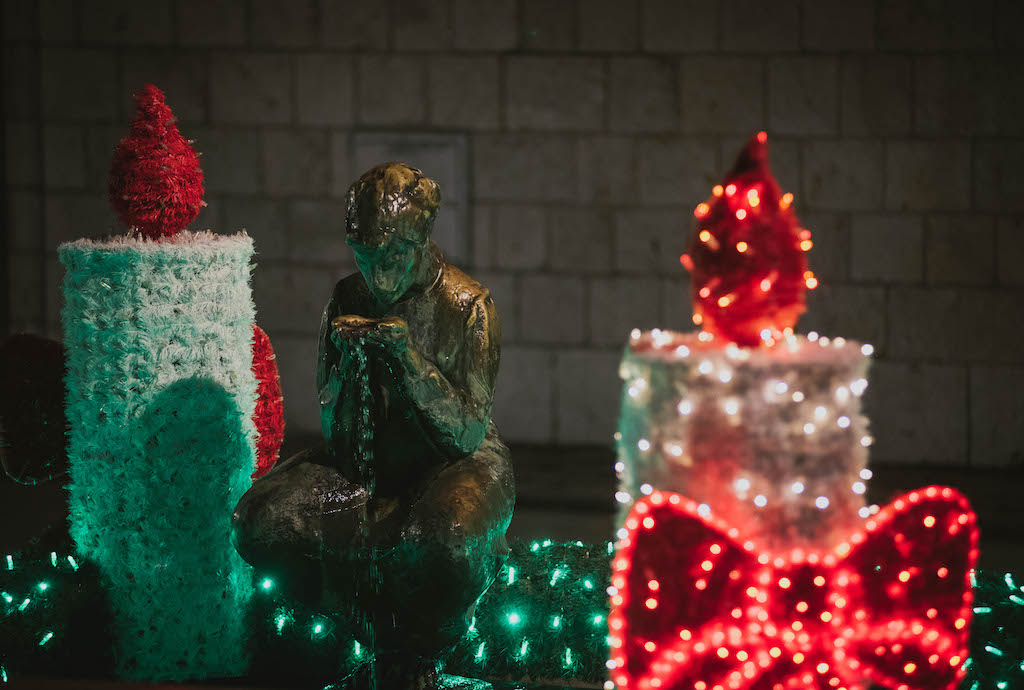
In the Cetina region, it was customary for the host to take a bowl of blessed water to sprinkle around the house, in the barn: on sheep, horses, and cattle. The children would decorate the tree, the women would prepare bakalar. The preparation of pogača was common and for this region it was typically unleavened garlic pogača. In the evening, the host would bring straw into the house and spread it on the floor while the Lord's Prayer was said, and then three Christmas trees (a tree with a carved cross, a symbol of the Holy Trinity) would be brought in with the words "Welcome Christmas Eve and the Holy Birth!"
Two Christmas trees would then be ordered, and the third would be left for the New Year. A Christmas candle pressed into a bowl with grain was lit by the flame of Christmas Eve. After dinner, everyone would toast with wine and take a sip from a wooden mug. Usually, the host would then dip the bread into the wine and extinguish the candle with it while the others prayed and said, "Bring grain, bear wine."
It is believed that the first to die is the one who's candle smoke went out first. In a cheerful and good mood, the whole family would go until midnight. The straw brought in on Christmas Eve would be brought out by the hostess on the feast of John the Baptist and sprinkled in the fields and gardens, and then the ashes from the hearth were collected because it was believed to be holy and would protect from evil.
Monika Vrgoc
We may be deprived of many traditional Christmas concerts, fairs, and other tourist program activities, but it allows us to dedicate ourselves to humanitarian and educational actions; give a helping hand to the less fortunate, opening our hearts and giving warmth and comfort when anxieties overwhelm us.
In the power and flame of the remaining Advent candles - the second Sunday candle of reconciliation or Bethlehem - brings peace, the third pastoral - celebrates joy and happiness, and the fourth candle, the candle of angels, brings love.
And when we can again celebrate side by side, face to face, we will joyfully repeat the words of St. Paul: "Maranatha!", "The Lord has come!"
To read more about Sinj and Inland Dalmatia, follow TCN's dedicated travel page.
Take a Virtual Walk through Our Lady of Sinj Sanctuary and Sinj Town
November 17, 2020 - The Sinj Tourist Board, in cooperation with the City of Sinj, the Our Lady of Sinj Sanctuary, and the Cogitolab tourist agency, has successfully completed the first phase of a virtual walk through the city of Sinj and the Sanctuary of Our Lady of Sinj.
Faced with a global pandemic, due to which we all have limited movements, and new market conditions and modalities, in mid-May, the Sinj Tourist Board launched the Virtual Sinj project.
In addition to the existing virtual tools, this project tries to bring the entire offer of the city (its sights, rich cultural and historical heritage) closer to interested visitors and encourages future visits to Sinj. The virtual walk was prepared and designed by members of the experienced team of the Cogitolab agency in cooperation with the priests of the Sanctuary of Our Lady of Sinj. They provided them with the necessary conditions and helped create content for many pilgrims to the largest southern Croatian Marian shrine.
Namely, every year during the novena to Our Lady of Sinj, there are several pilgrims that travel to the Sanctuary. They also visit other sights in Sinj.
Therefore, the Sinj Tourist Board decided to bring them closer in this form, in accordance with the goal of the Cogitolab agency: connecting and enabling a quick and easy overview of large Croatian Marian shrines, from Marija Bistrica in the north to the Sanctuary of Our Lady of Sinj in southern Croatia.
You can experience Sinj virtually at https://heritagecroatia.com/bastina/virtualni-sinj/
The Sinj Tourist Board thanks everyone who helped them in creating the Virtual Walk through the city of Sinj.
For the latest travel info, bookmark our main travel info article, which is updated daily.
Read the Croatian Travel Update in your language - now available in 24 languages.
Ministry of Agriculture Gives Green Light: Vrgorac Farmers to Receive 300,000 HRK Next Year
November 5, 2020 - Great news for Vrgorac farmers, who will receive around 300,000 kuna next year as support from the City.
Slobodna Dalmacija reports that by creating a three-year comprehensive assistance program, defined through seven different measures, the city administration in Vrgorac decided to help its farmers.
After the City Council's support, the program received the necessary approval from the Ministry of Agriculture, so the first public calls can be expected in early 2021.
"In the area of the City of Vrgorac, agricultural production is extremely developed, and the most important products are strawberries, prosciutto, wine, peaches, nectarines, grapes, table grapes, vegetables, and honey. We are among the leading areas in Croatia in wines, prosciutto, strawberries, and table grapes. More than 450 family farms are active," says Mayor Ante Pranic, adding that the program contains de minimis aid, which will be granted in accordance with EU rules on state aid to agriculture and rural development.
The program contains seven measures: support for the preservation and expansion of livestock; support for the preservation and expansion of the bee stock; support for the purchase of equipment, tools, and machines for the development of agricultural production; for the renovation and construction of greenhouses and hothouses; for the introduction of ecologically advanced methods in agricultural production; support for investment in the processing of agricultural products, and, as a seventh measure, support for investment in vegetable production, planting strawberries and the establishment of new perennial plantations. These grants will be co-financed by the City from 2021-2023.
Last year, the City defined its own quality label for agricultural products, "Vrgorac Quality," to increase the mutual knowledge and value of these products by creating a recognizable brand.
This program will be available only to farmers who are in the quality label system. In the first year, 300,000 kuna in aid is predicted," Pranic emphasized.
To read more about lifestyle in Croatia, follow TCN's dedicated page.





